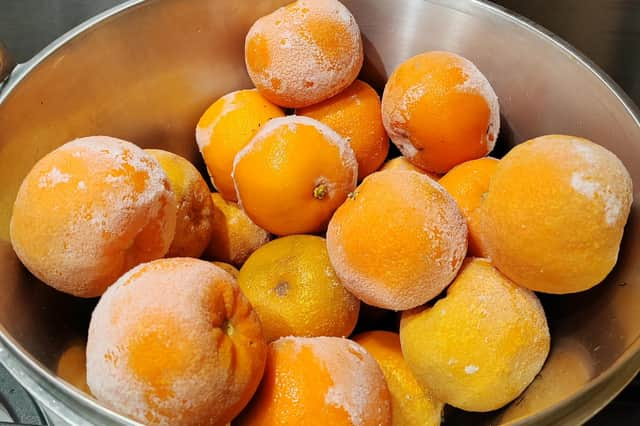Passions: Orange crush – how I learned to love making marmalade


If you like marmalade, then the very best stuff you can get is homemade.Which is how we got into making our own. We like to cook but hadn’t really had a go at jam, marmalade or preserving.
Now we make around 70 jars a year. My mum, who used to make marmalade every year, is addicted to the stuff and gets through a jar every two weeks. It was her wish for homemade marmalade that prompted us to have a go once she was no longer able to make it herself. Now it’s a quarterly task that we have learned to love.
Advertisement
Hide AdAdvertisement
Hide AdFor those who haven’t made it before, it’s not particularly hard. You boil up oranges in water and then add sugar and heat until it’s ready, decanting the molten marmalade (very carefully, I should add) into to jars which have been sterilized with boiling water. And that’s it.
There’s a bit to learn about the proportions of orange to water to sugar and cooking time, but it’s not too difficult.
You can’t use any old variety, they need to be Seville oranges, which are too bitter to eat and only available in our supermarkets for a couple of weeks in late January, early February.
We buy kilos of them and keep them in the freezer, to use when needed.
Our base recipe is from Good Housekeeping’s Home Preserving booklet, published in 1953, which also shares how to make chutney and bottle tomatoes, though we’ve never tried the latter.
Most recipes suggest double the quantity of sugar to fruit, but we prefer a little less. We also cook the oranges whole – many recipes say you should chop up the fruit first – until you can easily push a wooden spoon handle through, leaving them to steep in the water overnight for extra flavour.
Next is the cutting up of the fruit, which is the fiddly bit but the trick is not to rush but lean into it. Play some music, listen to the radio and settle into the rhythm.
Judging when your batch has set and is ready to put in jars is probably the hardest part. Let it boil for too long and it will be solid once cooled but too little and it will be too runny. Learning is all part of the fun.
So why not try making a trial batch? You might enjoy the fruits of your labour.
Will Slater is a sub editor at The Scotsman